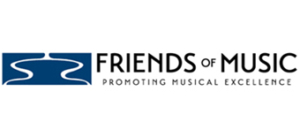Osvaldo Golijov grew up in an Eastern European Jewish household in La Plata, Argentina. Born to a piano teacher mother and physician father, Golijov was raised surrounded by classical chamber music, Jewish liturgical and klezmer music, and the new tango of Astor Piazzolla.
After studying piano at the local conservatory he moved to Jerusalem in 1983, where he immersed himself in the colliding musical traditions of that city. Upon moving to the United States in 1986, Golijov earned his Ph.D. at the University of Pennsylvania.
In the early 90’s Golijov began to work closely with two string quartets, the St. Lawrence and the Kronos. Both ensembles were the earliest to project Golijov’s volatile and category-defying style in its full form. In 2002, EMI released Yiddishbbuk, a Grammy-nominated CD of Golijov’s chamber music, celebrating ten years of collaboration with the St. Lawrence String Quartet. This recording contains Last Round, the Golijov piece to be performed by the Two Rivers Chamber Orchestra on November 7, 2015.
Golijov’s masterpiece is the St. Mark Passion, which visually reimagines Bach’s Passions on the streets of Cuba and Brazil. It was commissioned for the European Music Festival, to commemorate the 250th anniversary of Bach’s death. The work was premiered in Stuttgart on September 5, 2000, where it received a 25-minute standing ovation and was widely hailed by critics as establishing a new voice for classical music at the dawn of the 21st century. A true pan-American passion, this is a theatrical and original carnival of South American singing, dancing and drumming. It turned Golijov into the most feted young composer in America.
In 2003, Golijov was awarded the MacArthur Fellowship for his work to that point. Since then he has composed a number of works for the singer Dawn Upshaw. He is Loyola Professor of Music at the College of Holy Cross in Massachusetts.
Golijov’s career has not been without controversy. He came under scrutiny in 2011 for a series of high-profile commissions that were either delayed or cancelled. Questions of musical plagiarism have also been raised about Golijov. An article in The New Yorker in 2012 detailed the claim that Golijov had copied the work of composer Michael Ward-Bergeman in Golijov’s Sidereus, a work commissioned by thirty-five orchestras that was supposed to be 25 minutes long, but turned out to be 9 minutes.
One thing that can be said for certain about Golijov is that his music is spirited and unusual. We will write more about Last Round in a future blog post.

